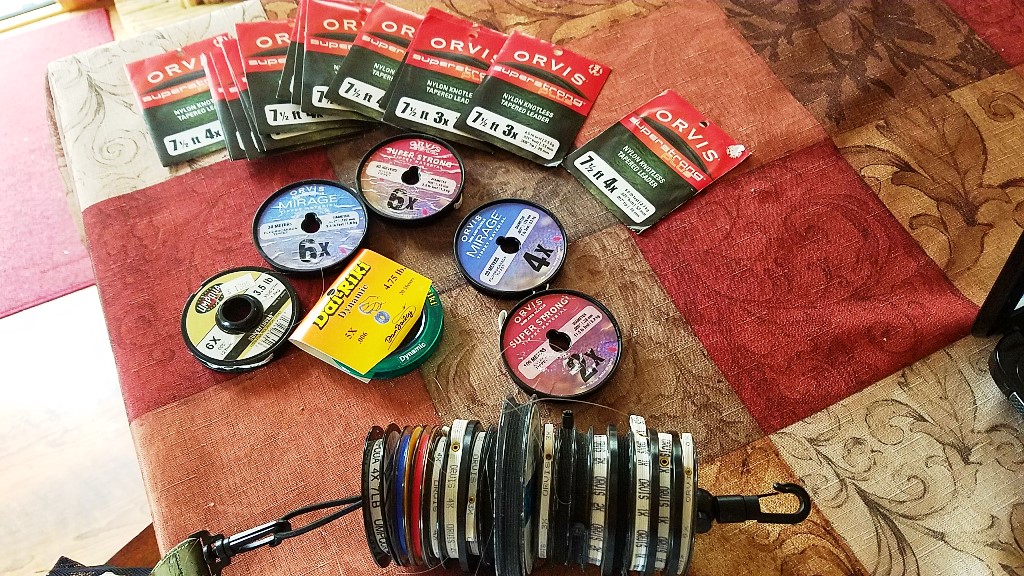I was just talking to a friend and he was asking about flourocarbon and if I think it is really worth the extra cost. We also talked about when to use flourocarbon versus mono.
As with anything, there’s good and bad with both. The theory behind flouro is it disappears in the water which gives the angler an advantage. In reality, it doesn’t completely disappear but it is as close as any form of line or leader can get to the refractive index of water, thus making it virtually invisible, but not completely. The downside is that flourocarbon sinks which makes it difficult to fish dries. If using a flourocarbon leader, it will also sink the tip of your fly line. If you are using a sinking line or stripping a fly, this isn’t a big concern but if you are nymphing or dry fly fishing and need to mend, it becomes difficult when your line is sinking.
Most flourocarbon is stiff and not all knots hold well. Monofilament has stretch which makes it hold better. For example, I find that an improved clinch knot holds a lot better with flouro than a regular clinch while either knot works fine with mono. If you are having knot failures with flourocarbon, try a different knot.
Anything I want to float, I use monofilament and anything I want to sink gets tied to flourocarbon. This is done 100% of the time. As a guide, I go through a few hundred meters of flourocarbon a year. It is more expensive than mono which means if I didn’t feel like it worked, I wouldn’t use it. So, if I am fishing a dry and dropper, I use mono to the dry and flouro to the dropper. If I am nymphing, I make sure that I have mono running to just below the indicator and then my flies tied to flouro.
Even though there is extra cost to fishing flourocarbon, it does disappear more in water and the fish don’t see it as well. Monofilament is necessary when fishing dries and flourocarbon works best when fishing subsurface so make sure you always have both on hand.

